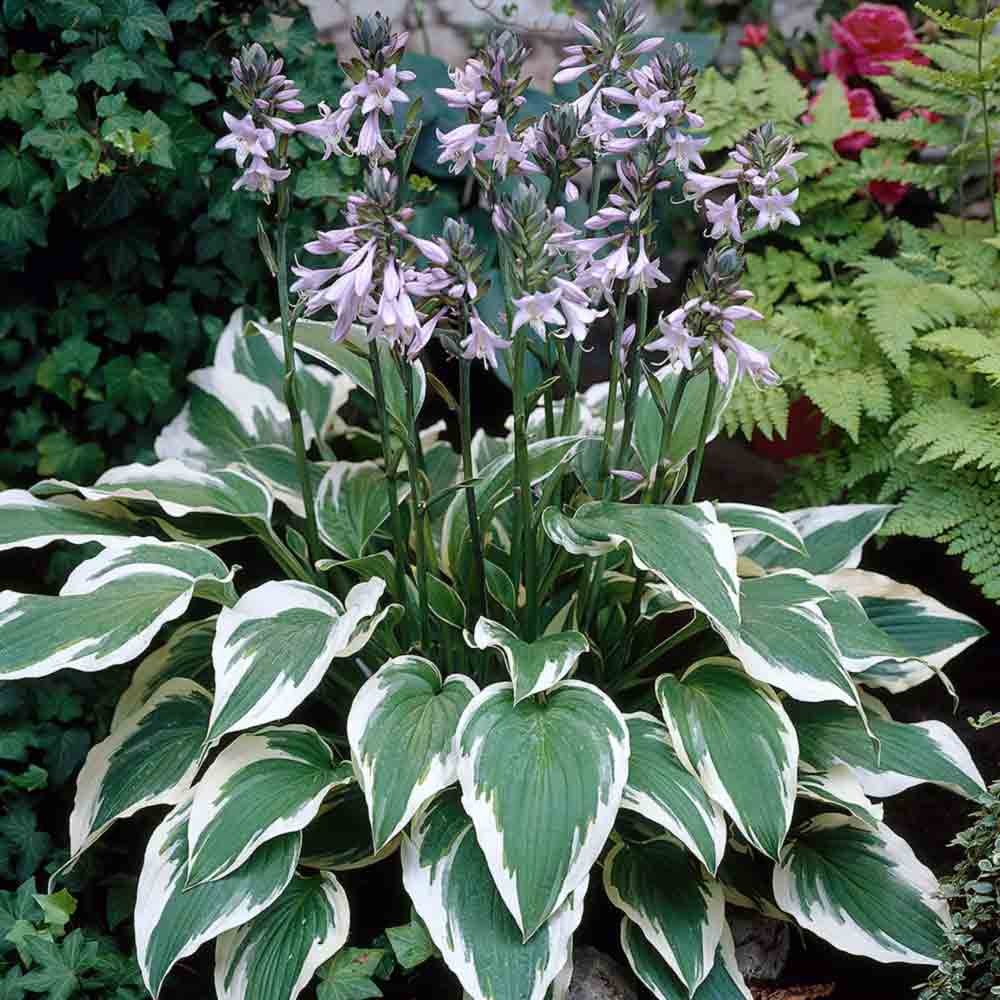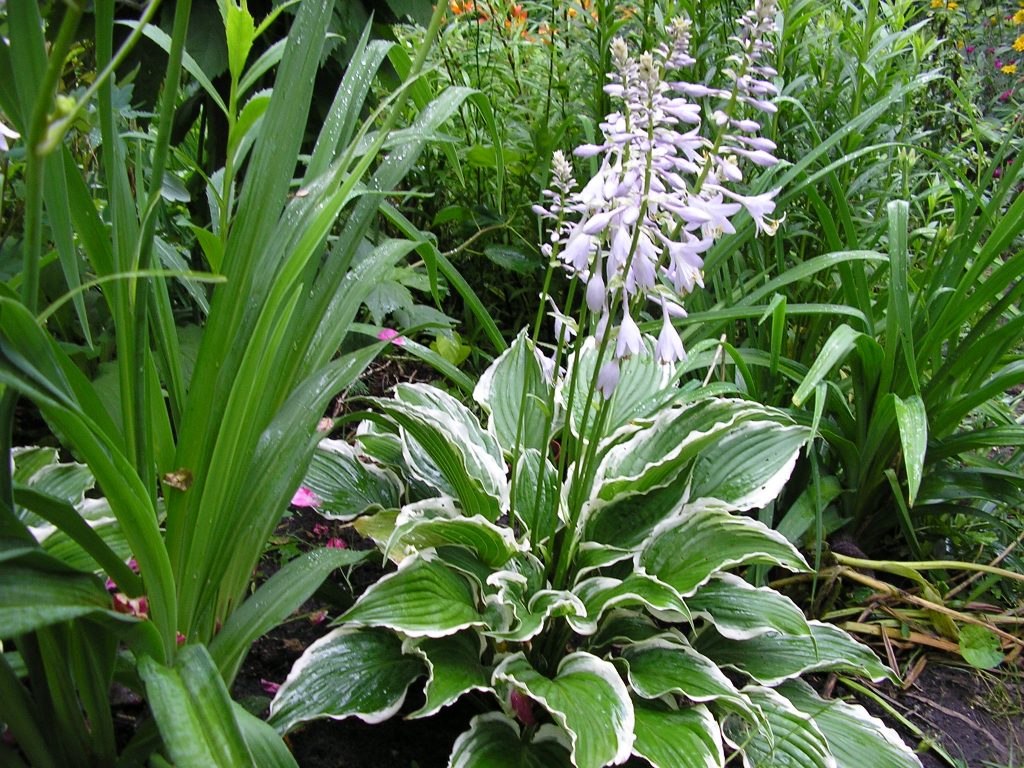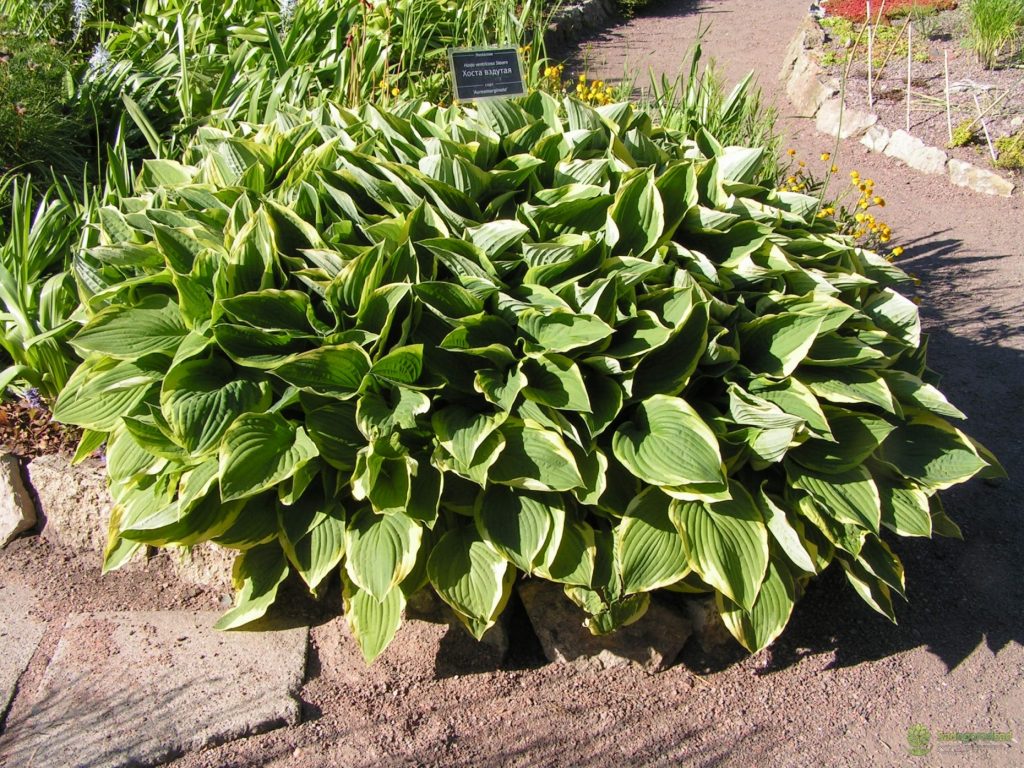Breeding hosts - the best ways
Hosta belongs to the Asparagus family and belongs to herbaceous perennials. It is grown outdoors and is widely used in landscape design for decorating household plots and landscaping urban and park areas. Reproduction of hosts is carried out in several ways - by seeds, leaves and dividing the bush.

How the hosta plant reproduces
Optimal timing
The flower can be propagated throughout the growing season. In this case, the specific terms depend on the chosen method:
- for seed, spring is more suitable, approximately the end of March-April, in order to have time to germinate seedlings, transplant them into open ground;
- spring and summer are suitable for cultivation by cuttings, until the end of July;
- the division of the bush is usually carried out in the fall when transplanting, but this must be done 3-4 weeks before the expected onset of the first frost, in order to give the plant time for rooting and adaptation.
Seed propagation
The seed method of obtaining another plant is rarely used by ordinary gardeners, because it is very labor intensive and has a small survival rate. More often it is chosen by breeders to develop new varieties.
When breeding with seeds, varietal characteristics are not transferred from the mother bush, therefore the main purpose of this propagation method is to get a new subspecies.
Obtaining hosts from seeds takes a long period and includes several stages: from pre-sowing preparation of planting material to planting germinated seedlings in open ground.
The shape of the seeds is oblong. Brown colour. Length ranging from 0.5 to 1.0 cm. Are located in yellow seed pods, which form instead of faded buds.
Seeds are collected 7-8 weeks after pollination, towards the end of summer. Readiness is determined by the brown color of the bolls, which dry and open by the stage of full ripening.
It is possible to collect seed from the fruits before they start to rot, within 3-5 days.
Seed storage rules
The seeds are dried for 5-10 minutes in an oven at a temperature of about 300 ° C until the moisture completely evaporates. Then they are cleaned of lionfish and placed in a refrigerator for 30 days.
The heated and hardened planting material is stored at 10-40 ° C in a dry, dark place in small bags, preferably in fabric, in small portions, 30-50 pcs.
Seeds do not lose germination rates for 2 years.
Training
The host does not have a high germination rate. Only 70% of the seeds germinate, therefore, before sowing, they are treated with growth stimulants, for example, with aqueous solutions of Epin and Zircon, soaking for 15-20 minutes.

Reproduction of hosts by cuttings step by step photo
The best option for germinating seedlings would be a plastic container with organized drainage holes in the bottom.Before sowing, it is treated with boiling water or a weak solution of potassium permanganate (potassium permanganate).
For cultivation, a ready-made flower substrate or a self-prepared soil mixture is suitable, to which perlite and peat must be added.
Technology
Before disembarking, the bottom of the container is laid out with drainage and covered with soil, tamping the voids. Seeds are sown on the surface, sprinkled on top with an earthen layer up to 1 cm thick.
The shelter is not removed from the greenhouse until the seedlings are strengthened, airing daily for 1-2 hours.
To create a greenhouse effect, plantings are covered with plastic wrap or protective glass. The container with seedlings is placed in a warm place with a temperature level of about 20-25 ° C away from direct sunlight.
Seedling care
Watering is carried out as the soil dries out, avoiding stagnant water.
The first shoots appear in the second or third week.
When 2-3 leaves of planting are formed, they dive, transplanting into individual containers or thinning the sowing, leaving only the strongest shoots.
When transplanting seedlings, the soil mixture is changed to a more fertile one. After the pick, the upper shelter is removed and after 5-7 days, the seedlings begin to harden - take them out into the open air for 2-3 hours at an ambient temperature of at least 18 ° C.
Planting seedlings in open ground
They begin to plant as soon as the air warms up above 20 ° C, and the soil - more than 10 ° C to a depth of 10 cm. Seedlings are transplanted by transshipment together with an earthen lump.

How to propagate a hosta with a leaf
Reproduction by dividing the bush
One of the most successful simple breeding methods is division with rosettes of leaves. An adult bush is usually divided in the fall, at the time of transplantation in preparing the culture for winter.
The leaf method helps to preserve the parental characteristics and transfer them to the new plant.
Step-by-step instruction:
- when fresh shoots appear, young rosettes with leaves are cut off along with the remainder of the rhizome, called the heel;
- the cuts are sprinkled with wood ash or clean sand;
- the delenki are planted in a greenhouse or in a shaded place, covered with plastic bottles on top;
- for 3-4 weeks as they take root, the sprouts are watered and ventilated for 1-2 hours a day;
- after the final adaptation, when fresh shoots and leaves appear, the bushes are transplanted to a permanent place of growth.
Propagation by cuttings
Cutting along with the method of reproduction of hosts by dividing the bush is used quite often. This method helps to obtain hybrids while maintaining the quality characteristics of the mother plant.
Carrying out technology:
- young shoots on short petioles with a small number of leaves are chosen for cuttings;
- the shoots are planted in a darkened place in the open ground and watered daily.
More often, the sprouts left after pruning are used as blanks for breeding.
Initially planted cuttings look sluggish, which is associated with a weakened state and adaptation. The recovery period takes about 3-5 days. Successful rooting will be indicated by the raising of sprouts and the beginning of growth.
Landing features
When planting new bushes, hosts for reproduction follow a number of rules:
- choose a shady place without swampiness;
- the holes are made at a distance of 0.7-0.8 m from each other, so that when the root system grows, as the plants develop, they do not have to be replanted again;
- infertile soil is brought to the required state by introducing peat;
- friability is increased with vermiculite and perlite;
- planting is carried out with soil compaction, organizing a small hill 2-3 cm above the earth's surface;
- the base of the bushes is mulched with crushed tree bark or ephedra.
Care rules
Water as the soil dries out, taking into account the weather conditions. The approximate frequency is every 3-5 days.

How to propagate hosta by seeds video
They are often fed with organic matter, which is introduced by the root method after watering.The most suitable feeding is the mullein, which is fertilized in spring and summer. Minerals are used as additional food, sealing along the perimeter of growth.
Prune the plant for sanitary purposes, removing old damaged shoots and leaves. This is usually done once a year, in the spring.
Transfer
Usually, the flower culture is not transplanted, because it can grow in one place for a long time. The need for a transplant arises when:
- inappropriate conditions when the plant slows down growth and development;
- overgrowth of a bush and a lack of free space.
When conditions change, it is not recommended to transplant the flower to where the Asparagus previously grew, in order to avoid the transmission of similar diseases. The optimal break is 5 years.
Pre-winter preparation
Whether or not to cut the hosta before winter is an individual choice. The culture winters well without pruning. Its foliage and flower stalks turn yellow and wither, gradually turning into natural fertilizer.

Hosta leaf propagation
The basic rule is that you need to cut the leaves no earlier than it turns yellow, because green mass is the source of nutrition for the root system.
When growing a flower crop in the northern regions, it should be covered. For insulation, both natural materials (coniferous spruce branches, dry grass) and artificial materials - agrofibre, spandbond are suitable.

